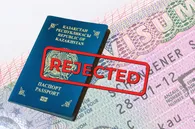A report recently published by the World Bank outlines ways for Kazakhstan to ease its transition to a sustainable low-carbon economy, QazMonitor reports.
According to the findings of the Country Climate and Development Report (CCDR), Kazakhstan has recently reached the threshold of a fossil fuel-dependent economy.
Detailing ways to help Kazakhstan achieve its development goals, the Bank’s experts suggest economic reforms and investments in the following priority areas:
Electricity. Coal and gas account for 90% of the country’s electricity production and are the main source of carbon emissions. Improving energy generation from renewable sources – solar and wind – will serve as the driver of the energy transition, while gradually phasing out coal usage and improving efficiency in transport and infrastructure.
The socio-economic transition will put the people of the Pavlodar and Karagandy regions at risk of losing their livelihoods. In this regard, Kazakhstan should provide the affected demographic with training in new occupational fields to minimize unemployment rates.
Decorbanizing the economy will require a broad range of reforms aimed at attracting investment. Creating an enabling environment will be a key factor in this regard, as stimulating the entrepreneurial capacities of small and medium enterprises will create opportunities for the financial sector to participate in green finance.
Agriculture, water, and rangeland. Rising temperatures and changes in precipitation exacerbate desertification and degradation of arable land and pastures. Combatting the effects of climate change should include the introduction of climate-optimized agriculture, such as expanding the use of modern greenhouses and sustainable livestock practices. Moreover, the country should consider renewing and modernizing aging water supply systems.
As the world's 20th-largest carbon emitter, these are the actions Kazakhstan must undertake in order to achieve its goals of a 15% reduction in greenhouse gas emissions by 2030 and achieving carbon neutrality by 2060.
The inaction on this front could cause climate-related shocks resulting in an economic reduction of 1.6% by 2050, a poverty increase of 3%, and a reduction in real wages of 2.1%. If Kazakhstan remains on the sidelines of the global decarbonization movement, the country will face a prolonged decline in annual growth rates of 2-2.5%.
Additionally, if global climate policy measures such as the European Union’s Carbon Border Adjustment Mechanism (CBAM) see enactment, the World Bank estimates that the annual loss of the country’s export revenues could be more than $250 million, with iron and steel production being the most at risk. In case of further expansion of CBAM coverage to include oil, these losses may grow up to $1.5 trillion.
However, the country's vast steppes have wind and solar energy reserves that are sufficiently competitive on the global market. Clean renewable energy sources could become not only the dominant energy sources for Kazakhstan but also an important export item.
Kazakhstan, as the world’s largest reserves of zinc, tungsten and barite, could also take advantage of the growing global demand for minerals required by low-carbon technologies. The country has the world's second-largest copper and fluorite reserves, 10% of the world's iron ore and 25% of natural uranium reserves putting it in an advantageous position as a supplier of precious rare earth elements.










